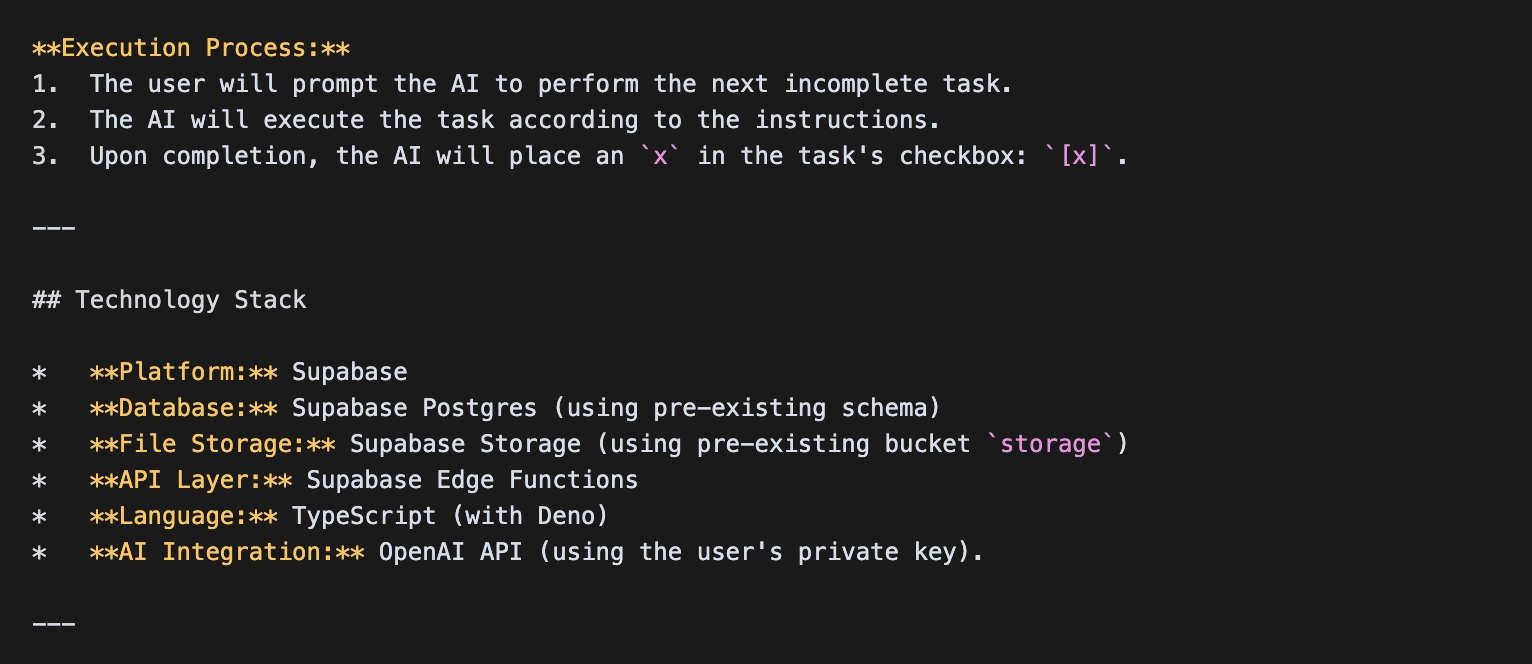The AI Architect: How to Write Instructions That Get Production-Ready Code from Your LLM
Stop getting generic, buggy code from your AI assistant. Learn the 6 core principles for writing structured, actionable development plans that guide an LLM to build exactly what you need, case-study included.

If you've spent any time working with an AI coding assistant, you've felt the thrill of generating code in seconds. You've also likely felt the frustration when that code is generic, buggy, or just plain wrong.
Here's the secret:
The problem isn't the AI. It's the instructions.
To get top-tier results, you can't just be a user asking for features. You have to become an AI Architect—a planner who provides a clear, structured blueprint for the AI to follow.
We recently used this exact methodology to build a serverless backend for processing XLSX files. This article breaks down the principles we used, giving you a repeatable formula for your own projects.
The 6 Principles of AI Project Architecture
A successful AI-driven project relies on a plan that is structured, adaptable, and crystal clear. Here are the six core principles we followed.
1. Define the Goal, Then Embrace the Pivot
Start with a clear vision, but don't be rigid. A good plan is a living document.
Our initial plan was to use Python and FastAPI. But after discussing the project's goal as a rapid prototype, we pivoted to a serverless architecture with Supabase and TypeScript. This flexibility was crucial and saved significant time.

2. Think in Tasks, Not Vague Phases
Phase 2: Build API is a recipe for disaster. It's too vague. Break every phase into small, concrete, and verifiable tasks.
Using markdown checkboxes (`[ ]`) creates a visual roadmap that you and the AI can track.
3. The LLM Doesn't Have Your Context
Never assume the AI knows about your existing systems. If you have a database, give the AI the schema. If you have code, show it.
We provided our exact Postgres schema at the start. This forced the AI to adapt its entire plan to our reality, preventing it from generating code based on a generic, imaginary database.

4. Be a Director, Not Just a Describer
Don't just describe what you want; provide explicit, step-by-step instructions.
- Bad:
"Create the function."
- Good:
1. Run `supabase functions new upload-rfq` to scaffold the file. 2. Write the TypeScript code to accept a file and a `company_id`. 3. Upload the file to the `storage` bucket...

5. Define "Done" with a Deliverable
How do you know a task is truly complete? Define a clear deliverable. This makes the process objective, not subjective.
- Task: Adapt the Database Schema
- Deliverable: A new `.sql` migration file containing the `CREATE TABLE` and `ALTER TABLE` statements.
6. Plan for the Real World
Even for a prototype, think about real-world requirements. We knew the RFQ process involved negotiation, so we designed our database schema with versioning from day one. Planning for complexity upfront prevents painful refactoring later.
Conclusion: You Are the Architect
The quality of your output is a direct reflection of the quality of your input. By shifting your mindset from "user" to "architect," you provide the clear, logical blueprint that an LLM needs to become a truly powerful and effective builder.
The next time you start a project with an AI partner, don't just write a prompt. Create a plan. That initial investment will pay for itself tenfold in speed, accuracy, and the quality of the final product.


Comments ()